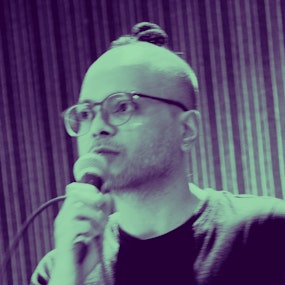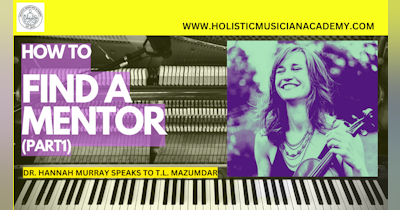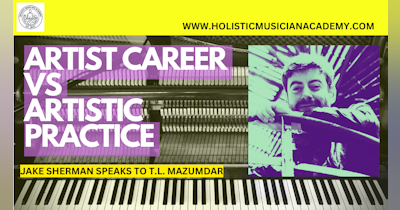This article is supplementary material to the Podcast Interview with the only surviving member of D For Brother, Amyt Datta, which you can listen to HERE.
Unwitting pioneers of a genre that has garnered controversy for being white-centric and lopsided in its narrative, D For Brother were the two cousins Amyt and Monojit Datta, based in central Calcutta (now 'Kolkata') whose cutting-edge and path-breaking experiments in the studio and onstage alike were way ahead of its time to have survived the lull of the sleepy and forgotten ex-capital of the Indian republic. Decades before a globalised economy, access to internet and the online onslaught and digital levelling changed the trajectory of the South-Asian arts landscape permanently.
The remnants of this masterpiece, preserved only through limited-edition cassette tapes amidst a loyal following and an abridged lo-fi bandcamp version (following the tragic and unexpected death of Monojit Datta in 2017), complete with pops and hisses is an unassuming tip of an ice-berg that leads to a story of near-unbelievable and era-defying artistic innovation and integrity by two self-taught musicians whose journeys and their implications remain scantily documented and barely understood.
Release Details and its History, Placement, and Relevance
T.L.: Your first release was as DIY as it gets. How'd you go about it?
A.D.: We used to make demo tapes at the time, Kochu and I. Demos meaning a finished (DIY) finished product with handwritten inlay cards, (with the music recorded on) blank tapes for friends and associates. Thats how it started. Like a full package. We were looking at it like a self-produced, home-spun production, but in a ‘demo’ format.
Later we found this record company Plus Music based in Bombay, with whom Kochu went (flew from Kolkata) to negotiate with the label and their counterpart in Calcutta. They eventually released it, but the company soon after ‘packed up’, and everything went up in thin air. So (commercially) it didn’t really do that well at the time. Now it’s kind of this iconic, ‘legendary’, niche kind of pocket it gets circulated in.
The Writing/Recording Process
Note: Despite the multi-layered production ethic, no click tracks were used during the entire recording.
T.L.: May I request you to tell us about the writing and recording process?
A.D.: We started writing around 87-89, but went to the studio around 90-91.
Y’know what, Kochu use to sit with the guitar and come up with ideas like chords or some passive (suggestions) like a drone and he would show me and ask if I could take that basic core idea and expand upon it.
One good thing about his writing was that because he wasn’t aware of the so-called parameters of ‘harmonic’ music, he would just go anywhere. That really helped me to go outside the conventions. It was pretty challenging as well though. Sometimes it’d just be a chord with (a random) note on the guitar with the first string open which he’d played just because it was physically possible. Sometimes I wouldn’t be able to figure out what the chord he was pointing to qualified as, so I’d have to proceed based completely on instinct which (looking back) is actually how it should be done.
Following this, I’d take the guitar (and play my interpretation of a guitar part based on his suggestion) and he’d very often play a beat on the couch that we were sitting on with a matchbox as a snare or something like that. On one of the occasions, he showed me a tune by tapping it on the guitar. (I knew of Eddie Van Halen, but this was more of a drummers approach). He used sticks on the fretboard while holding some kind of chord on the left hand.
At the time we were also touring a lot with a (Cover-Rock) band called ‘Shiva’ and we’d often find ourselves jamming backstage before or after gigs. One of these jam sessions backstage at a performance at a venue located inside a in a reserve forest resulted in the writing of ‘At A Distance’. It was all very organic. Never really planned with a specific format. Over the years, I always tried to keep that rustic, raw aspect to the music. Even if I recorded those tunes now, I’d like to keep that approach.
After 2-3 months of rehearsals gathering enough material to record, the brothers decided to hit the studio. The rehearsals remained the couch-dominated jam sessions and hangs all throughout and were never full blown run-throughs of a studio performance at all. So upon arrival at the studio, the material was very raw and unrehearsed, leaving the two to figure out the intricacies as they started layering the parts down. All based on afternoons spent drumming and humming on the couch. There was a sense of unknown adventure. These were not finished compositions, let alone the kind pre-production material most bands would hit a studio with today. The studio and the manner in which the recordings proceeded were very much part of the compositional process.
An aspect that is quite possibly pivotal in the timeless character of this album. One that gave it a cult status amidst it’s ever-loyal audiences and putting it a cut above many other World Music acts that have not managed to stand the test of time.
AD: All we had was a melody, some form of basic harmonic structure and a beat or a groove or a feel. And as we went into the studio, we’d keep discovering our thoughts and ideas, delving in deeper into the tune ourselves. That gave us a very spontaneous, fresh approach to it. That energy is probably what helped us get the music through time.
T.L.: Were there disparities between what your original vision and how it turned out in t the studio?
A.D.: Most of the time it was better than what we thought because we could layer with MIDI guitars, keyboards, and additional guitars. But we’d always hear it in our head before we hit the studio. I remember this one time when we knew exactly what the panning on a song was to be like. The congas were on the left while a marching drum type of thing on the right. these were decisions we made in the house. We always had a sonic image vaguely, even though (we were open to) changes in the studio. A lot of times we’d book the studio for 15 days. And record the minus one tracks as well for the live performances on tape.
T.L.: Were there any musical accidents?
A few. Mostly positive. Especially occasions like when I put a MIDI guitar through synths lying around (specifically a Roland D10) which ended up giving me an Electric Miles-centric sound (incidentally that synth was used on the Tutu album) that really inspired me in a manner that neither of us could have visualized when rehearsing at home.
On a less positive side, I’d often be racing against time while soloing as I observed the tape running out on the Ampex 456 recorder 1 inch tape.
T.L.: How do you compare the experience to current recording systems offering endless, non-destructive recording possibilities?
A.D.: The limitations might have actually ‘captured the moment’ more honestly, with all it’s highs and lows. At the time, awareness of factors like the lack of funds to book additional studio time, or lack of tape, and the old-school mixing techniques where three pairs of hands (the brothers and the sound engineer Ephraim Isaacs) seems to have rendered a very specific ‘now or never’ energy to the music.
T.L.: Although recorded on 8 Track, there are multiple layers of instruments (an aspect that added to local audiences' fascination at an era where such sonic experiences were rare, especially in pre-open economy India. How'd you manage to go about that at such an early phase of your recording career, especially without any external guidance?
A.D.: I'd made a track-sheet at home before I went to the studio. If I remember correctly we recorded drums to a demo and bounced it to a stereo track. And then layered fresh tracks on that. I also kept the nature of the track in mind since the bouncing would result in generation loss. So we’d take that into account making sure the tracking order was such that the earlier takes were of instruments where the resulting ‘muddy’ sound wouldn’t matter as much.
Note: While one would think this is reflective of an approach of the seasoned studio musician, neither of the brothers were actually ‘studio musicians’, a niche that was very specific at the time since live musicians and studio musicians needed very different skill-sets for their craft.
So the amount of thought and visualization that went into the prep work before hitting the studio for an album that was quite cutting edge for its time with its recording techniques, one which creates quite an expansive and layered sound by only two performers is quite fascinating. On being asked if this prep work was as well planned out as one would tend to think though, the reply is the same: the Dutta brothers had nothing more than a guitar and a couch for their rehearsal facilities.
T.L.: How do you feel about being unwitting pioneers of a genre like ‘World Music’ from India. A genre that has been under a critical lens recently for being too ‘White-Centric’. Did you even know about the labeling and implications?
A.D.: We were aware of the 'World Music' label. We also knew that a record label called Windham Hill produced similar music.
Personally, I was not too upset by the genre name because what they probably wanted to promote was a holistic sound covering the mellow and pastoral side of music. D for Brother as a duo wrote whatever caught our fancy without worrying too much about the genre. Now when I look back, I realize we were much ahead of our time, with that kind of music, that ‘one world’/ ‘world music’ kind of thing. Whatever caught our fancy, we would just try to incorporate with taste.
At this stage of my career, I can (be bold enough) to say that there are certain aspects, and depth to approaching music many of my Indian counterparts failed to take into consideration when implementing traditional Indian instruments in a global format. So if a white guy does it with a better sense of context, I’m happy to let that be a reference. We were listening to a lot of artists at the time who were doing that, though we never tried to copy anybody per se.
On custom-made instruments
The brothers were in an environment where access to instruments was limited as well. So the innovation extended to attempts at making their own.
T.L.: I have vague memories of the two of you having congas and guitars made from scratch.
A.D. : (Re: Congas)
Before Monojit Datta went on to become one Indias first Meinl Artists, his congas were locally made hand-drums he had to specify to a newbie drum-maker who was completely unqualified to make one.
Later on we got a fibreglass pair which we picked up in Bangkok a few years previous to the recording sessions. We had asked a friend in Switzerland to get us better conga heads, but they were oversized and none of the Calcutta shops knew how to fit them on the congas. So we got a Calcutta street cobbler (with no prior experience except for mending shoes!) to have the heads cut to the right size and stitch them on to the congas.
(Re: The Guitar)
I went to the Reynolds (music shop) factory on Cochburn street near Ripon street, selected the wood and gave the luthiers a design that I thought would work. It wasn't the best guitar in the world but it had some basic qualities that interested me.
Calcutta's Musical Divides
T.L.: Did the unorthodox manner in which Monojit Datta uses the Tabla ever get criticized?
A.D.: There was always a very specific divide amongst the musical traditions in Calcutta. Central Calcutta, Calcutta 16, (where we grew up) was the ‘hippest’, where Anglo-Indians, the British, and English-medium-school-educated Bengali folks would be hanging out and playing what was referred to as ‘western music’ (both popular and classical).
The south was the more intellectual ‘westerners’, who were listening to John Lennon and Dylan and the likes. And the north was more of (what could be referred to ) traditional Bengali music like Hemanta Mukherjee and Bengali movie soundtracks and the likes (whose musicians were all trained exclusively in South Asian classical music).
Musicians from one part of town would usually not be listening to those from another. So when some of the Pandits and Ustads heard our music, they couldn’t point a finger at us, because we were not even trying to play anything like they would. We would try to play a simple groove instead of trying to break down and perform complex rhythms like 19/8.’
Bass Parts
One exceptional and lesser talked about aspect to the album is the impeccably sensitive and tasteful bass playing by AD. This is especially relevant in a country and culture that has never had bass in its traditional music or used harmony in the way the west has.
His own take on this is contradictory. He seems shy to call himself a ‘bass player’ due to what he refers to as ‘technical shortcomings’.‘
A.D.: I can’t really play bass, I’m bad. Anything I played physically was limited to my physical capacity. I didn’t even try to stretch outside of it.
However, when probed on whether what he refers to as a ‘shortcoming’ might just be the reason why his approach is so intelligently minimalistic and effective, he responds with complete agreement. Going on to add moreover, that had he had the technical prowess, he would have still approached it in the manner he did.
A.D.: All you need is to be a musician, not a 'bass player’.
A somewhat paradoxical response noticeably reminiscent of a very specific era and mindset when the definition of ‘virtuosity’ was still conservative and usually associated with aspects like speed and physical prowess, regardless of whether the music actually needed it or not, (even as he expresses his skepticism the same when it comes to most local tabla players at the time), as opposed to tone, articulation, harmonic awareness, counterpoint, and economy, all of which Datta ticks off seamlessly.
Amyt Datta plays a Fender Jazz bass, and a custom made 4-string fretless o the album.
Pros and Cons of the 'Pre-Global' Environment
T.L.: How do you think the lack of information around you affected your work?
A.D.: The lack of tech know-how resulted in occasional frustration and possible shortcomings in the manifestation of the vision at times. That being said, the overtly complex and sophisticated ideas we might have gotten carried away with would probably have come with the risk of being inaccessible to some audiences due to a potential cerebral nature to it which was never really an option for them in the inherently spontaneous and spur-of-the-moment approaches they were working with per default.
T.L.: And when you compare to the easier access your younger counterparts have today?
A.D.: It’s good that they’re learning much faster. But they’re definitely missing out on something. They are grabbing onto the result from the very beginning and missing out on the ride of the process sometimes. I would like to think enjoying the ride as you go along with your mistakes is more of a learning than just grabbing the result or eating the pie immediately.
T.L.: D-For Brother's live career as a band was brief. But you had a very loyal audience who would flock to your concerts, most of which were sold out completely. So there's a paradox there, music ahead of its time, and yet selling out concerts. What do you think was going on there?
A.D.: Yes, we did have sold.out audiences in the few concerts that we did.
I think the instinctive innovation of the band still interested and tickled the audience's imagination. The finer senses were still alive in a niche audience attending our gigs. Attention spans were longer. Compared to now, in an age where you can flip to anything at a press of a button on your phone.
T.L.: You were fearless in the manner you went about this music.
A.D.: At my age, I can look back upon it and sound very philosophical, but honestly, we didn’t really think much at the time. We stuck to what we felt what we should do. We didn’t know if any of it would work. We just kept doing what our instinct told us to do. We were fearless, but we never thought of ourselves as fearless. Our weapon was honesty. And that carried all the qualities of what a human being needs to put out art. I’m not saying it was perfect or impeccably played. There are a lot of rough edges. But what cut through was this process behind the sonic image.
Transcribed and Edited by www.tlwrites.com
Used with Permission.
Links:
Connect with Amyt Datta:
Connect with T.L.
- Artist Website: www.everynowheremusic.com
- Mentorship: https://holisticmusicianacademy.com/
- Instagram: https://www.instagram.com/everynowheremusic/



